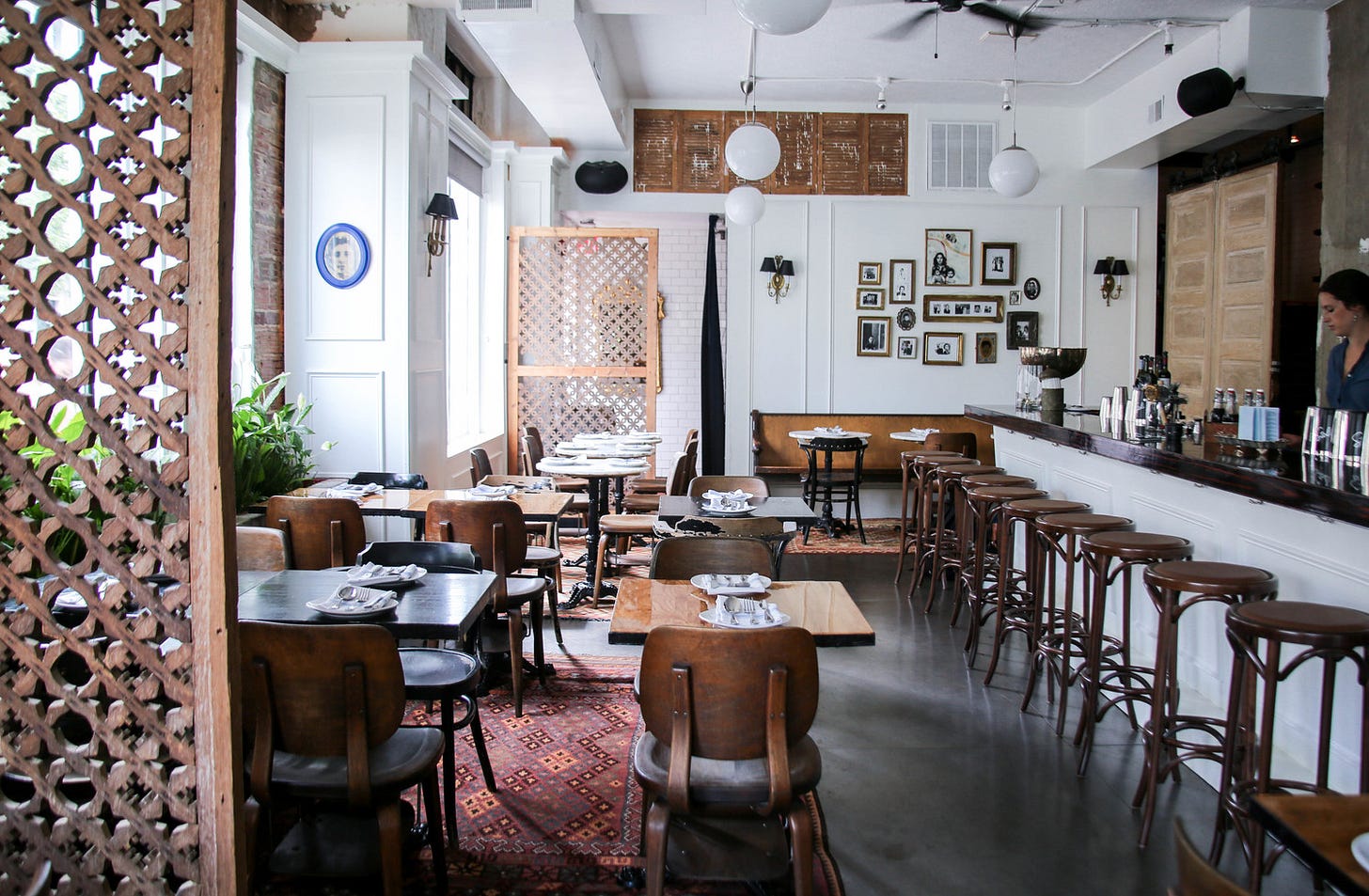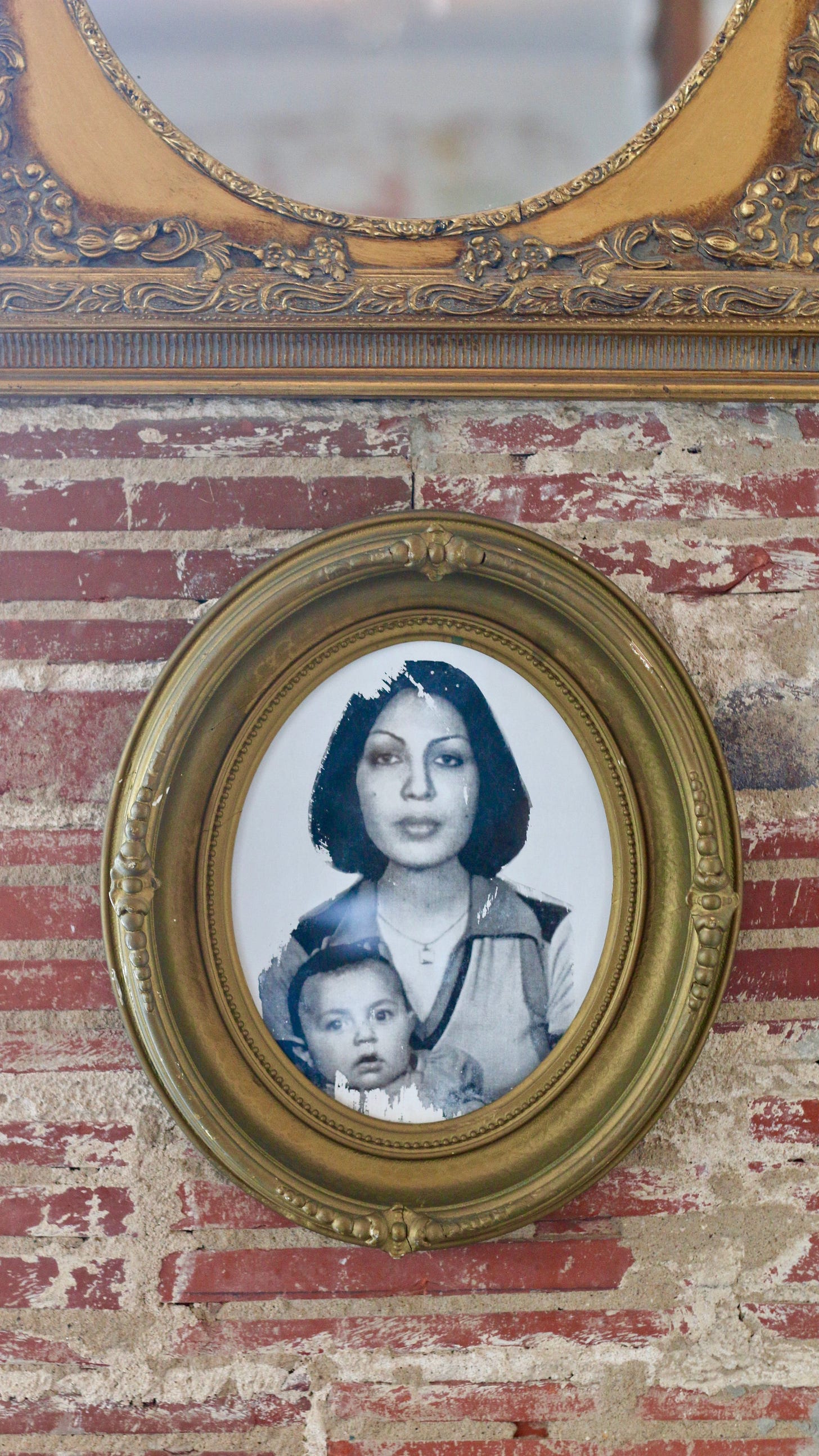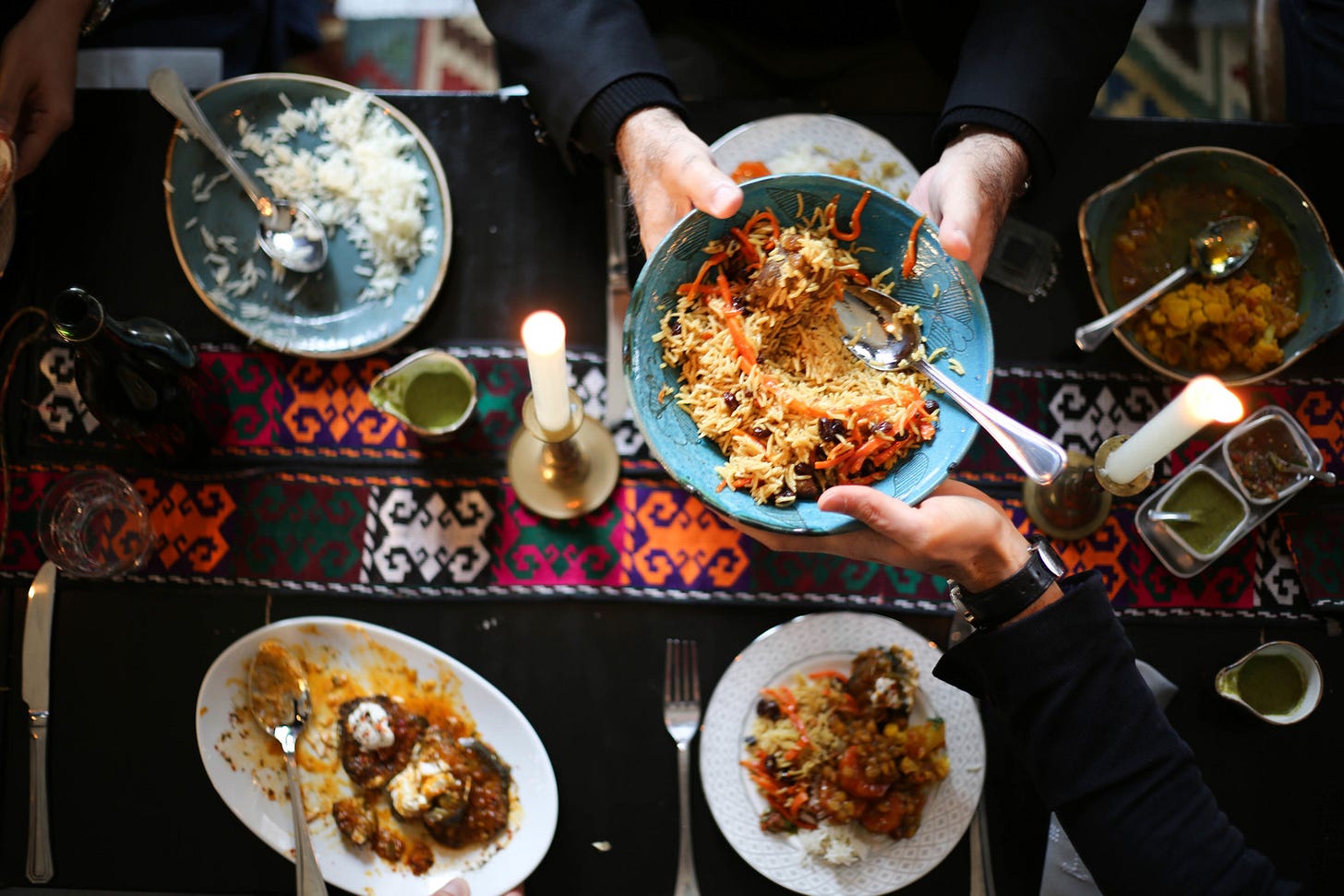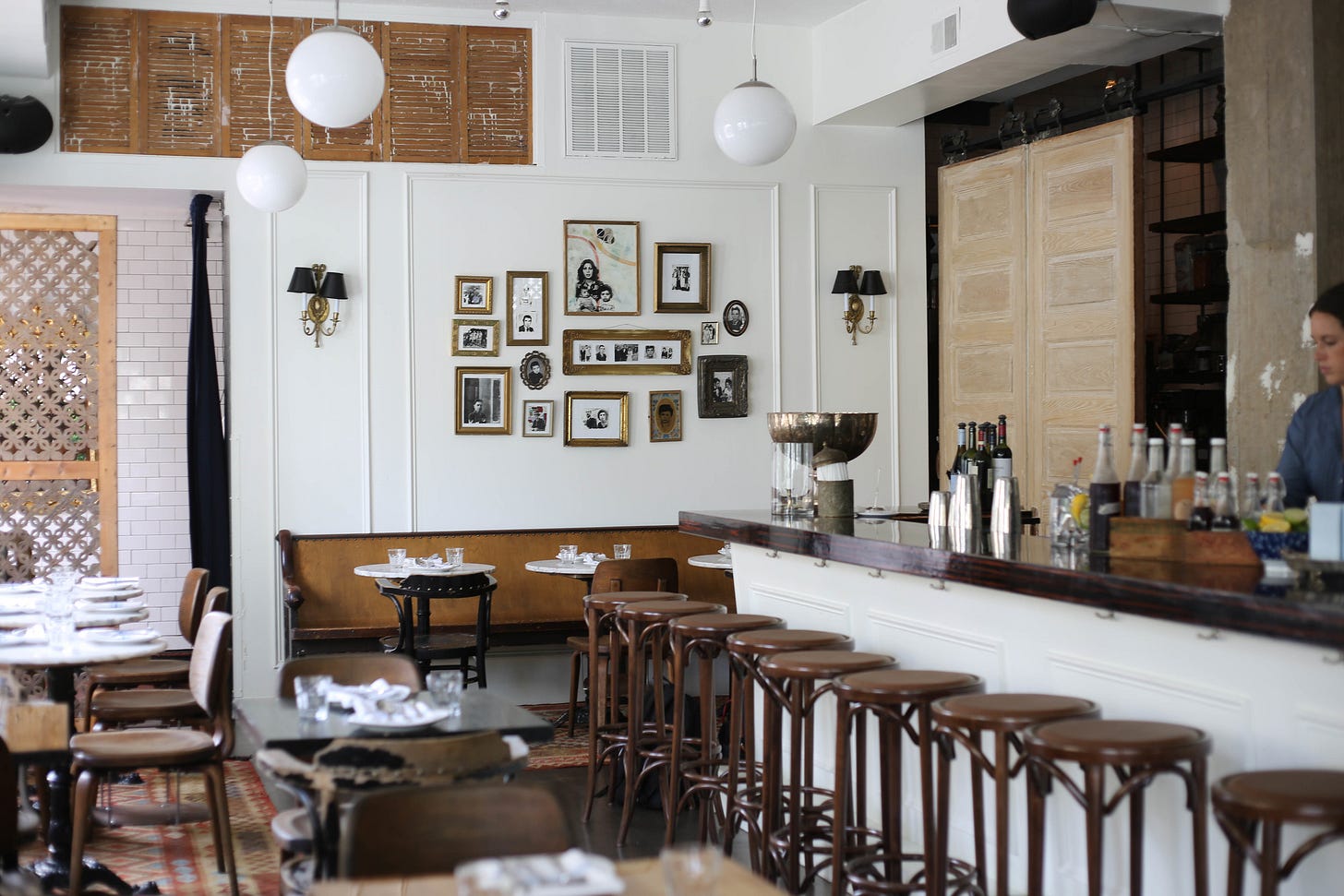Lapis | Washington, D.C.
After fleeing Afghanistan in 1980, the Popal family arrived in D.C., opening several French restaurants across the city. In 2015, they returned to their roots with Lapis, a modern Afghan bistro.
Fleeing campus for the evening, I recently dined at Lapis in D.C.’s Adams Morgan neighborhood with a few close friends. We ate downstairs at a long wooden table and feasted on Afghan dumplings, bolani (an Afghan flatbread with a leak-cilantro filling), buranee kadoo (braised pumpkin with onion, sour cream, and mint) shore-nakhot (a cold chickpea and potato salad), and morgh kabob (chicken kebab).
Both Lapis’s décor and food are wonderful, yet the story behind the family that opened the restaurant — as well as, I later discovered, a few of my other favorite D.C. restaurants — is what drew me most to share Lapis on here.

Founding Story
The Popal Family
The Popal family’s story begins in 1979 with the Soviet Union’s invasion of Afghanistan which forced over six million Afghans to flee the country. Pregnant with her second child, Shamim Popal, the matriarch of the Popal family, fled Afghanistan to reunite with her husband, Zubair, in Bahrain, who worked for InterContinental Hotels. Though they hoped to return to their homeland once the situation in Afghanistan calmed, after living in the Middle East for seven years, it was clear Afghanistan was only becoming increasingly dangerous. In May 1987, the family of four immigrated to the United States, where they landed in Washington, D.C.
Having not had to work back home, Shamim had few options to help support her family in the U.S. For several years, she worked at Marshall’s, earning only $3 an hour. Later, she enrolled in the Washington Business School and landed a job as a receptionist and then a job in administrative accounting at a private school in Virginia.
In the summer of 2003, the Popal family opened their first restaurant in Georgetown, Café Bonaparte, a Parisian café, now home to Lutèce. Shamim eventually quit her receptionist work to join the family venture.

Lapis
Successful in their first venture, the Popals expanded across the D.C. area, opening Napoleon Bistro and Malmaison. In April 2015, the Popals opened Lapis, what they call a “modern Afghan bistro,” which took over the space of Napoleon Bistro. “After 8 years of enticing you with our French food,” the Popals wrote in a note on the door at the entrance of what would become Lapis, “we decided to go back to our roots.” The restaurant is named after Afghanistan’s lapis lazuli, a deep blue gemstone, prized for its intense color.
After much convincing from her family, Shamim took the role of Executive Chef at Lapis. She describes coming up with the idea and menu for Lapis in family conversations over breakfast, as they imagined what role Afghan food could take in D.C.
Remarkably, prior to Lapis, Shamim has no formal training in cooking (with the exception of a class she took with a chef at the InterContinental hotel, where her husband worked in Bahrain). Only through calls home to her mother, secret lessons from her uncle as a young child (she grew up with cooks at home and was strictly forbidden from entering the kitchen while they were at work), and trial and error, Shamim learned to perfect traditional Afghan meals (with a modern, healthy twist).
At Lapis, everything is made from scratch. Lapis’s Afghan dishes are a product of recipes passed down generations and Shamim’s own journey as a refugee with experience using both Eastern and Western ingredients and spices. She takes pride in how Lapis has made traditional Afghan food healthier by using less fat and incorporating vegetables as a centerpiece of their menu.
Lapis has been awarded a Michelin Bib Gourmand every year the guide has been in D.C.

At home with the Popals
“Out guests’ experience needs to be the best and our restaurant is like our home,” Shamim told Edible DC in an interview, “When you come in, you are walking in our home and we will welcome you with open arms.”
At Lapis, the white-washed walls are covered with vintage family heirloom portraits — amongst them are Shamim’s passport picture with her two young children before she arrived in America (see above), family wedding photos, and prints of young children.

In other corners of the restaurant hang hand-carved doors and framed tapestries. Distressed venetian plaster cover the walls around a fireplace, beneath it a Rubab — Afghanistan’s national instrument. The restaurant has the effect and feel of sitting in the Popal family’s own living room, warm and inviting.
Glass globe light hanging from the ceiling, soft flickering candles on the tables, and black sconces hung on wall light given the space comfort. Afghan rugs warm the polished concrete floors.
Downstairs, where we sat (also home to Laptop, a basement coffee shop and cocktail bar by the Popals), sits a piano, bookshelves lined with books, and a bar.
Like the food, the décor pays homage to the family’s Afghan roots with a modern, airy twist.

I’ve found each of the founding stories and people behind the restaurants I’ve written on to be inspirational in their own shape and form. It seems that in every case, the people who open these restaurants — who pain over the details of the décor and the flavors of the food — possess a certain strength of character and dedication to their craft that I find remarkable. No matter what I end up doing later in my career, I hope not only to possess a degree of this passion and dedication to my work, but to be surrounded by people with it.
Learn more about Lapis on their website.
In the works is a post on Lutèce — the Popal’s other D.C. restaurant — which I can safely say is one of the best restaurants I’ve been to in a while. Until next time!




